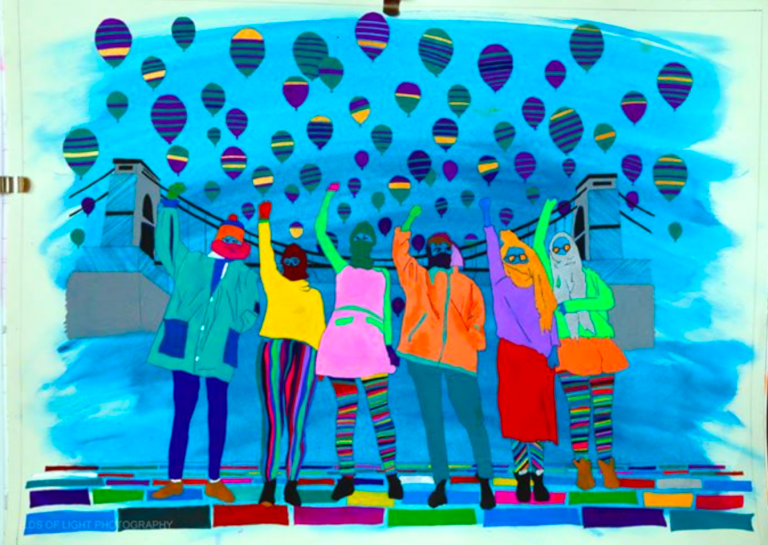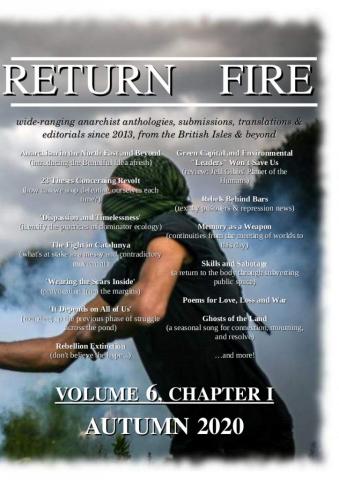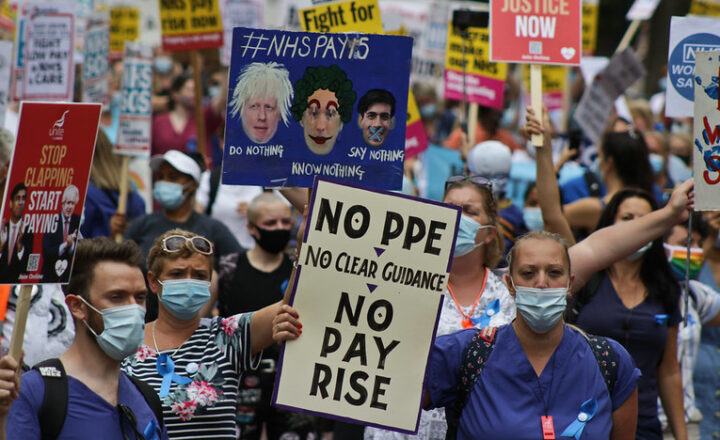The following is the first text contributed to Freedom’s new Art & Anarchy column. It will run each third Sunday of a month. Artists from all fields are encouraged to contribute their artwork and texts. Get in touch: editor(at)freedompress.org.uk. (zb)
The COVID-19 pandemic continues to change all our lives forever. “Social distancing” suggests that people should keep their distance. Yet the numerous Mutual Aid groups that have sprung up in response to the crisis are not about social distance but cooperation and self-organising whilst respectful of the need to keep physically distanced. A vicious New Austerity is coming. Racism is once again on the march, countered by global Black Lives Matter protests. We have damaged our planet. The world’s on fire. Our children’s futures and their children’s futures are unknown, but certainly bound up in uncertainty and precarity. Meanwhile, the rich are getting richer and richer. Lockdown bailouts for them. Little or nothing for millions of precarious workers, including numerous artists and arts workers.
Many of us who work in the arts have been devastated by the lockdown – losing work and struggling to see if and when our practices will return to some form of “normality” (whatever that was, is and may become). But we are not alone. Millions of workers face uncertain futures and the real prospect of unemployment – perhaps long-term unemployment. Artists and arts workers epitomise precarious working – our dreams of autonomy easily captured by neoliberal capital and the state.
Many of us are freelancers and “casual” workers. But we all too often struggle to understand that this makes us the same as 5 million workers across vast swathes of our economy. We are disorganised. The capitalists, the state and their managerial teams want us to be disorganised – to fight each other for scraps whilst they keep their annual salaries and pensions and sick pay and holidays. Just look at how quickly big arts institutions have shed hundreds of casual workers whilst maintaining their positions and their decent (sometimes obscene) salaries and benefits.
Artists and arts workers are in disarray, tied to neoliberal capitalism and state funding. Yet artists were once dangerous. We have paid a terrible price as we all-too-often capitulated to those spearheading the free market counter-revolution, too often selling ourselves to the devil for the paucity of the next Faustian pact.
Perhaps, then, it is time for artists to learn from the COVID-19 Mutual Aid groups that are self-organising and self-seeding across the UK and the globe? Imagine if artists set up local Artists’ Mutual Aid groups to support each other through these difficult times; to begin setting out ways of speaking to power with coherent voices; to start using art to demand radical changes to the way we work and live together. Imagine self-organised and self-organising local groups sharing and cooperating, and sharing and cooperating with other groups in other areas to start an Artists’ Mutual Aid Network (or Alliance) that linked in with communities and formed new alliances with other precarious workers. Imagine a renewed sense of solidarity and community that is at once autonomous and collectively powerful.
Art cannot save the world, but it can be part of the movements of movements that can change the world. But to do this – to be part of a movement for immediate and radical change – artists and arts workers must mobilise and unite. Perhaps a coalition of Artists’ Mutual Aid groups can lead the way in commoning the arts? The time is now because as artists warned in 2005 and again in 2012, THERE IS NO ALTERNATIVE: The Future is Self-Organised.
It is in this spirit that I call for artists and arts workers to work locally and within our communities to begin creating new alternatives now!
Stephen Pritchard
Stephen Pritchard is a community artist, writer, art historian, activist and filmmaker. He runs the Colouring in Culture website and you can follow him on @etiennelefleur.
Featured artwork by Natasha Quarmby/Fields of Light Photography.




